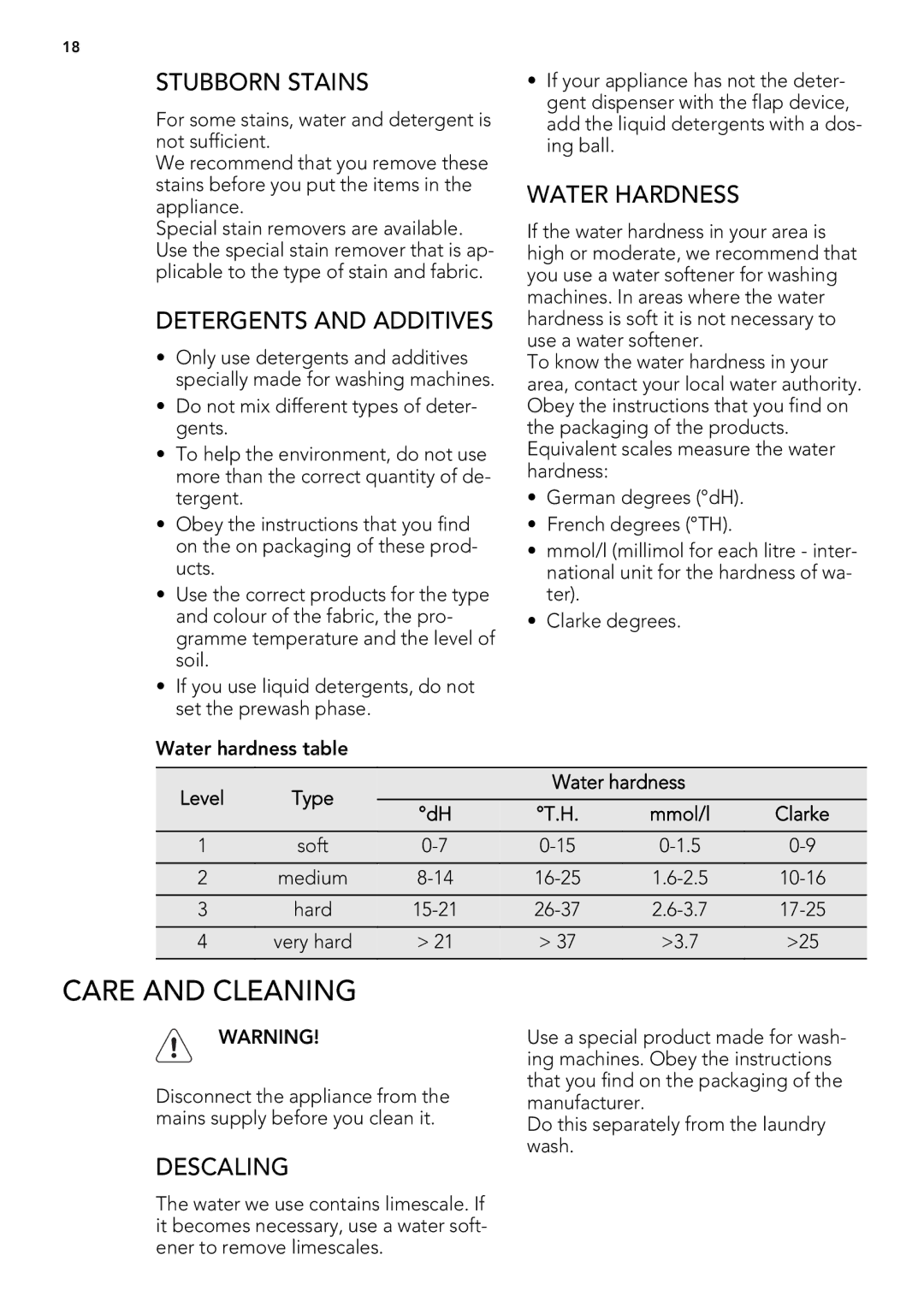18
STUBBORN STAINS
For some stains, water and detergent is not sufficient.
We recommend that you remove these stains before you put the items in the appliance.
Special stain removers are available. Use the special stain remover that is ap- plicable to the type of stain and fabric.
DETERGENTS AND ADDITIVES
•Only use detergents and additives specially made for washing machines.
•Do not mix different types of deter- gents.
•To help the environment, do not use more than the correct quantity of de- tergent.
•Obey the instructions that you find on the on packaging of these prod- ucts.
•Use the correct products for the type and colour of the fabric, the pro- gramme temperature and the level of soil.
•If you use liquid detergents, do not set the prewash phase.
Water hardness table
•If your appliance has not the deter- gent dispenser with the flap device, add the liquid detergents with a dos- ing ball.
WATER HARDNESS
If the water hardness in your area is high or moderate, we recommend that you use a water softener for washing machines. In areas where the water hardness is soft it is not necessary to use a water softener.
To know the water hardness in your area, contact your local water authority. Obey the instructions that you find on the packaging of the products. Equivalent scales measure the water hardness:
•German degrees (°dH).
•French degrees (°TH).
•mmol/l (millimol for each litre - inter- national unit for the hardness of wa- ter).
•Clarke degrees.
Level | Type |
| Water hardness |
| ||
°dH | °T.H. | mmol/l | Clarke | |||
|
| |||||
1 | soft | |||||
2 | medium | |||||
3 | hard | |||||
4 | very hard | > 21 | > 37 | >3.7 | >25 | |
|
|
|
|
|
| |
CARE AND CLEANING
WARNING!
Disconnect the appliance from the mains supply before you clean it.
DESCALING
Use a special product made for wash- ing machines. Obey the instructions that you find on the packaging of the manufacturer.
Do this separately from the laundry wash.
The water we use contains limescale. If it becomes necessary, use a water soft- ener to remove limescales.
